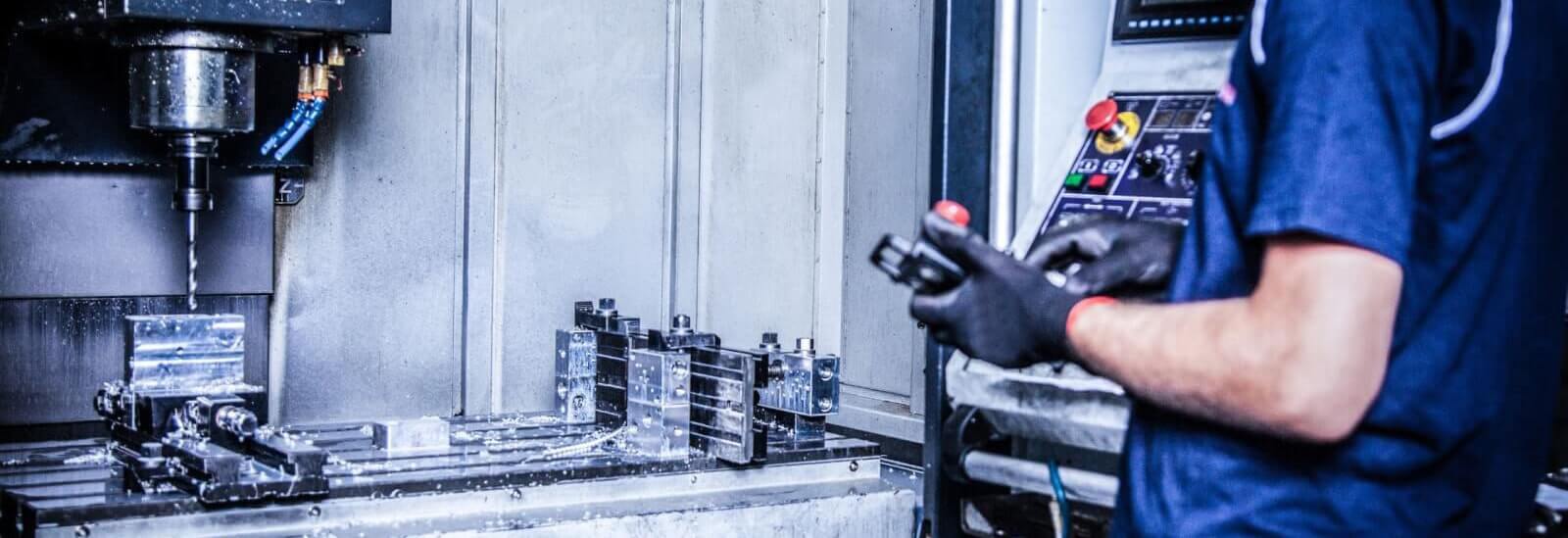Fasteners and Machining: Optimizing Style for Superior Manufacturing
Fasteners and Machining: Optimizing Style for Superior Manufacturing
Blog Article
Navigating the World of Fasteners and Machining: Strategies for Accuracy and Rate
In the complex world of fasteners and machining, the mission for accuracy and speed is a continuous challenge that requires thorough attention to information and strategic planning. From comprehending the varied array of fastener kinds to selecting ideal products that can withstand extensive needs, each action in the process plays an essential duty in accomplishing the desired result. Precision machining methods better boost the intricacy of this craft, calling for a delicate balance in between technological know-how and innovative approaches. As we dig right into the techniques that can enhance both rate and effectiveness in this domain name, the interaction between high quality control actions and operational excellence emerges as a critical centerpiece.
Understanding Fastener Types
When picking fasteners for a task, understanding the different kinds available is critical for making sure optimum performance and integrity. Bolts are utilized with nuts to hold products with each other, while screws are flexible bolts that can be made use of with or without a nut, depending on the application. Washers are important for dispersing the lots of the fastener and stopping damages to the product being fastened.
Selecting the Right Materials
Understanding the value of picking the right materials is vital in making certain the optimal performance and dependability of the selected fastener types went over formerly. When it involves bolts and machining applications, the material selection plays a vital duty in establishing the general toughness, durability, corrosion resistance, and compatibility with the intended environment. Different materials provide varying homes that can significantly impact the performance of the bolts.
Usual products made use of for bolts consist of steel, stainless-steel, brass, titanium, and aluminum, each having its one-of-a-kind toughness and weak points. Steel is renowned for its high toughness and longevity, making it ideal for a vast array of applications. Stainless-steel uses exceptional corrosion resistance, ideal for environments vulnerable to moisture and chemicals. Light weight aluminum is light-weight and corrosion-resistant, making it suitable for applications where weight decrease is important. Brass is commonly selected for its aesthetic allure and exceptional conductivity. Titanium is understood for its extraordinary strength-to-weight ratio, making it excellent for high-performance applications. Choosing the best material entails thinking about factors such as toughness demands, environmental problems, and budget restraints to make sure the desired efficiency and durability of the bolts.
Precision Machining Techniques

In addition to CNC machining, various other precision methods like grinding, transforming, milling, and drilling play crucial roles in fastener manufacturing. Grinding helps accomplish great surface finishes and limited dimensional tolerances, while turning is see this website usually utilized to produce round components with exact sizes. Milling and drilling operations are crucial for shaping and producing openings in bolts, guaranteeing they meet specific specs and function properly.
Enhancing Rate and Effectiveness
To hop over to here maximize fastener manufacturing processes, it is important to improve procedures and implement effective methods that enhance accuracy machining techniques. One key method for boosting rate and performance is the implementation of lean manufacturing principles. By decreasing waste and focusing on constant enhancement, lean practices help eliminate bottlenecks and optimize workflow. Additionally, investing in automation technologies can substantially enhance manufacturing rate. Automated systems can manage repeated tasks with precision and speed, allowing employees to concentrate on even more complicated and value-added activities. Adopting Just-In-Time (JIT) inventory management can additionally boost effectiveness by making certain that the ideal products are offered at the appropriate time, decreasing excess stock and decreasing lead times. In addition, cultivating a culture of collaboration and interaction among staff member can improve overall performance by advertising transparency, problem-solving, and technology. By integrating these strategies, suppliers can accomplish a balance in between speed and accuracy, ultimately enhancing their competitive side in the fastener sector.
Quality Control Procedures
Applying extensive high quality control steps is vital in guaranteeing the integrity and consistency of fastener products in the manufacturing process. Fasteners and Machining. Quality control actions encompass different stages, starting from the selection of raw products to the final inspection of the ended up fasteners. This involves analyzing elements such as material structure, resilience, and toughness to assure that the bolts meet market criteria.
Regular calibration of devices and equipment is imperative to preserve uniformity in manufacturing and make sure that fasteners satisfy the needed resistances. Executing stringent methods for identifying and attending to defects or non-conformities is crucial in preventing substandard products from going into the marketplace. By establishing an extensive high quality control structure, manufacturers can support the track record of their brand name and supply fasteners view that meet the greatest requirements of efficiency and longevity.
Conclusion

In the detailed world of bolts and machining, the pursuit for accuracy and rate is a continuous obstacle that requires thorough focus to information and critical preparation. When it comes to bolts and machining applications, the material selection plays an important function in figuring out the general stamina, sturdiness, rust resistance, and compatibility with the intended environment. Accuracy machining entails numerous sophisticated techniques that guarantee the tight tolerances and specifications required for bolts.In enhancement to CNC machining, other accuracy techniques like grinding, turning, milling, and drilling play important roles in bolt manufacturing.To optimize fastener production procedures, it is crucial to streamline procedures and carry out effective techniques that complement accuracy machining methods.
Report this page